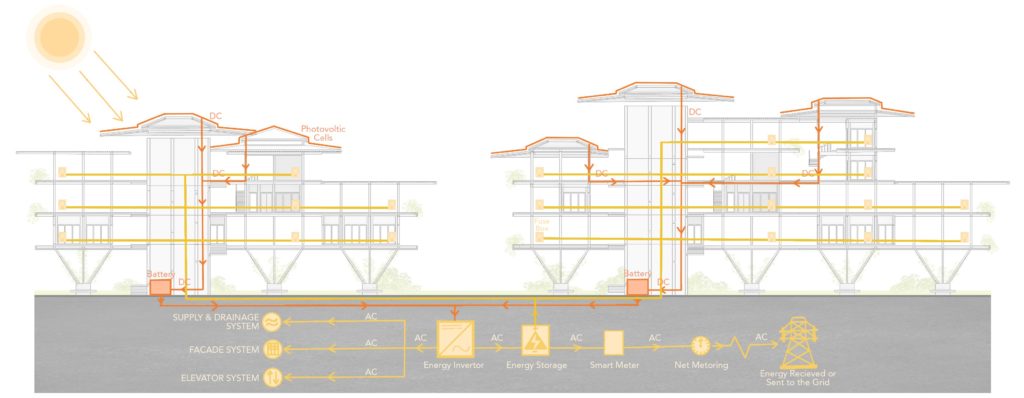With the design of the Nest, the idea is to best utilise renewable energy to offset the electric loads in the building. The goal is to use photovoltaic cells on the roofs of the building and design the structure to be as self-sufficient as possible.
CLIMATE ANALYSIS:
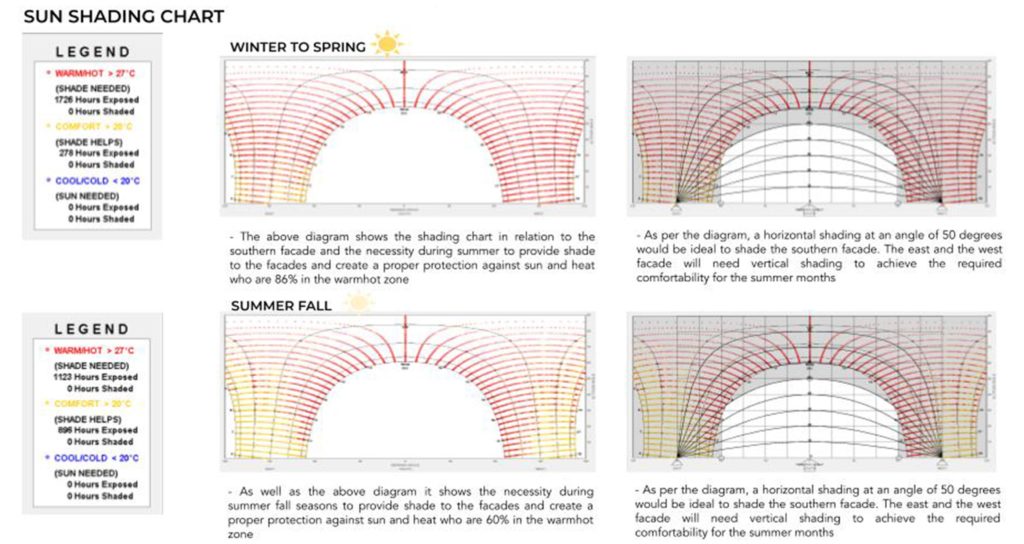
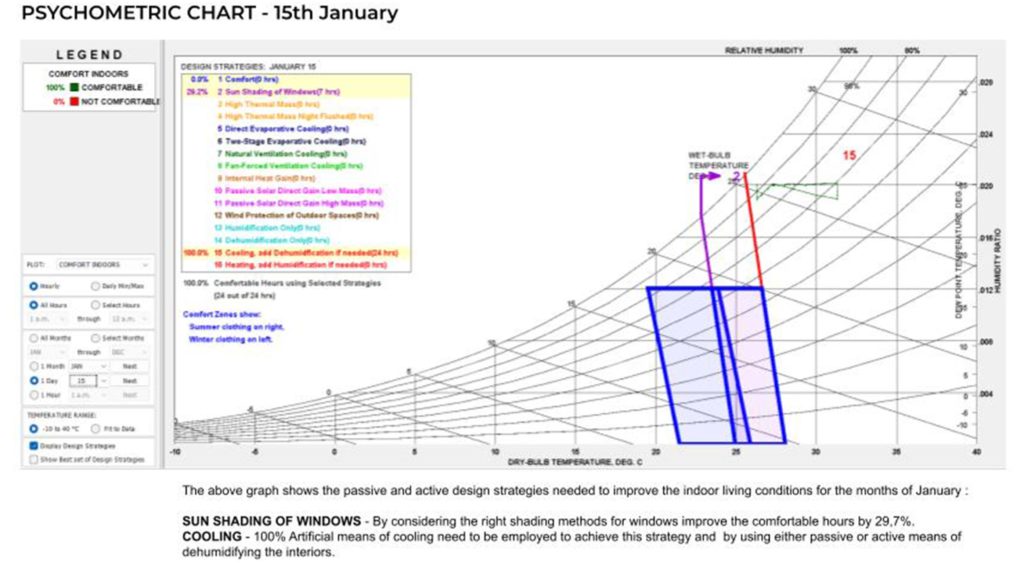
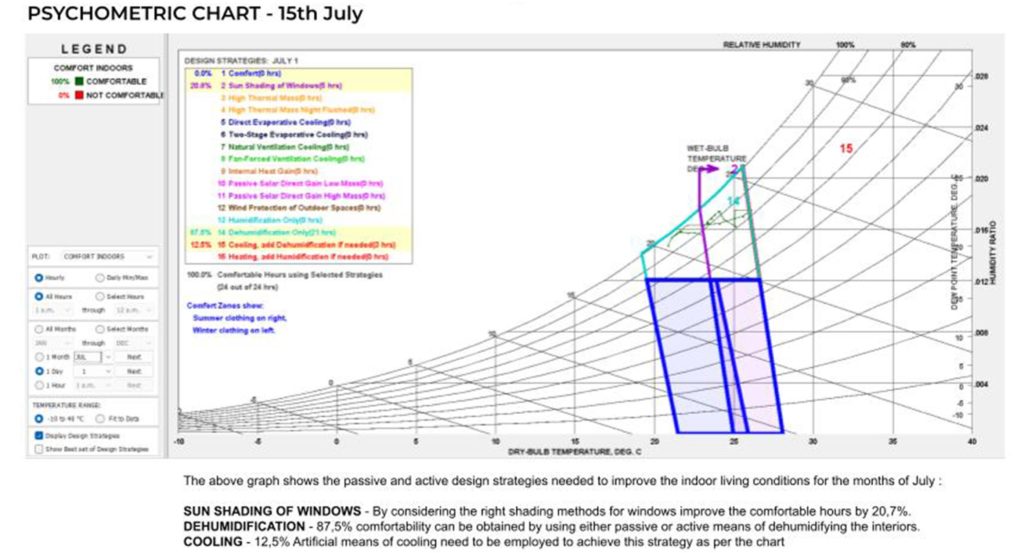
ENERGY CONSUMPTION:
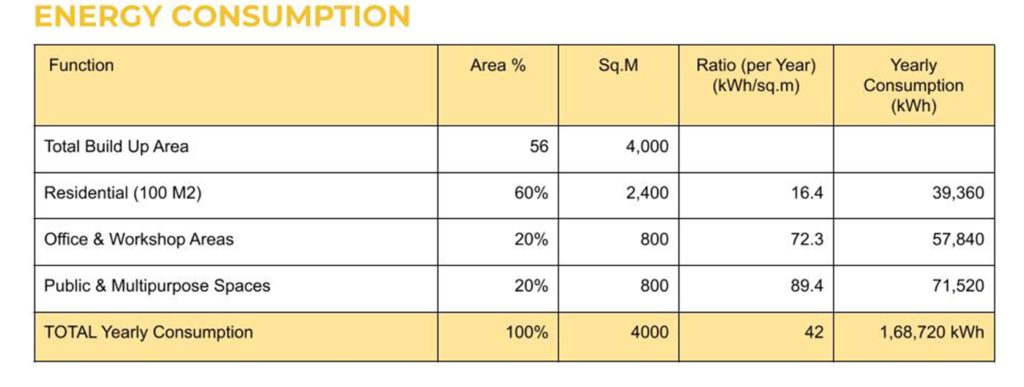
DESIGN ANALYSIS FOR SOLAR ENERGY:
To offset the loads of the building, Solar Energy is opted for. To better understand the shading analysis and the placement of the solar we used Sunny Design to get the project documents and analysis through onsite data. The design has two types of roofs- The pitched roofs made of Thatch and Pergola Roofs made of Cane. The Photovoltaic Cells are to be placed on the Thatch roofs. Hence the analysis is done for those prospective roofs.
Based on the Shading Analysis the most Efficient roof surfaces are selected and the solar panels are laid to fit the maximum amount. The result then allows to calculate the energy attained from the PV cells.
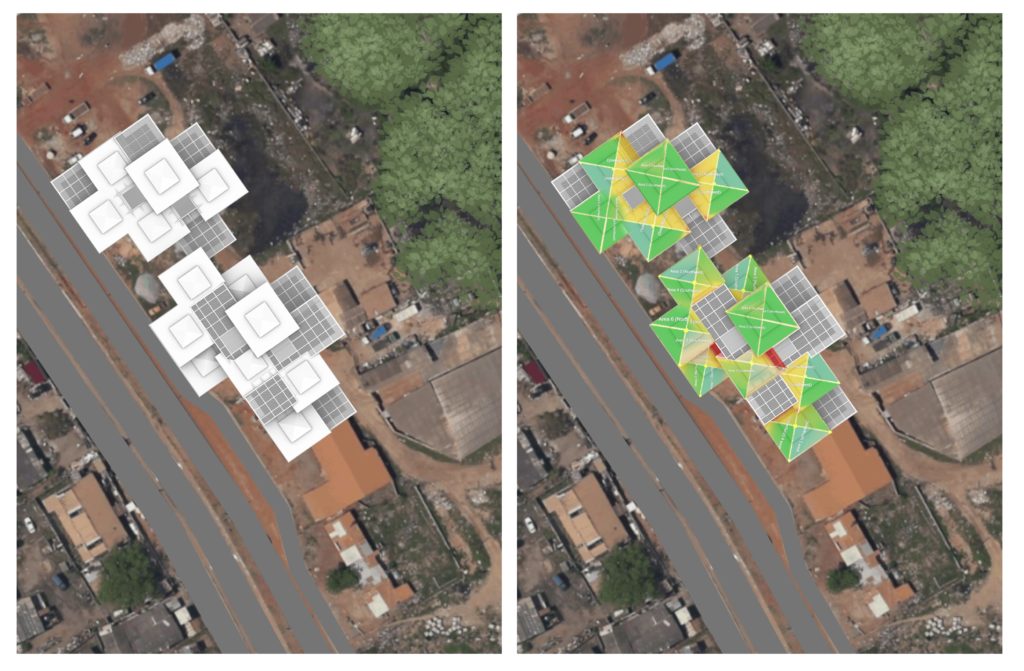
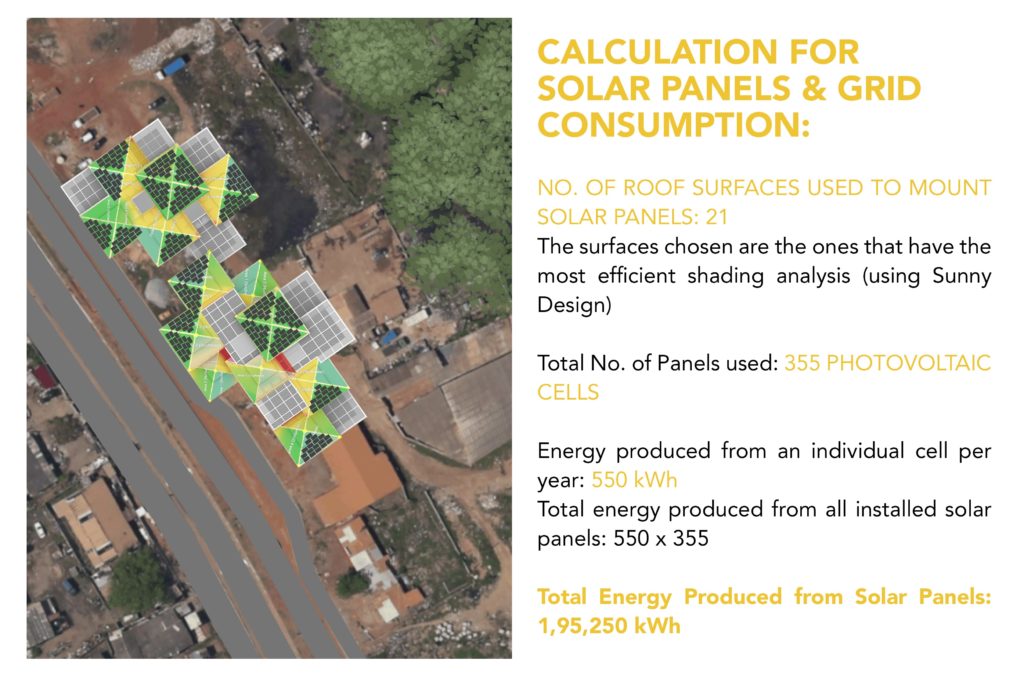
ENERGY SYSTEM IN THE DESIGN:
Having calculated the Energy generated from the Photovoltaic Cells we can see that the energy generated is more than the total yearly consumption of the design. The surplus energy is sent back into the grid and this then provides a positive revenue for the design. The entire design is functional on solar energy.
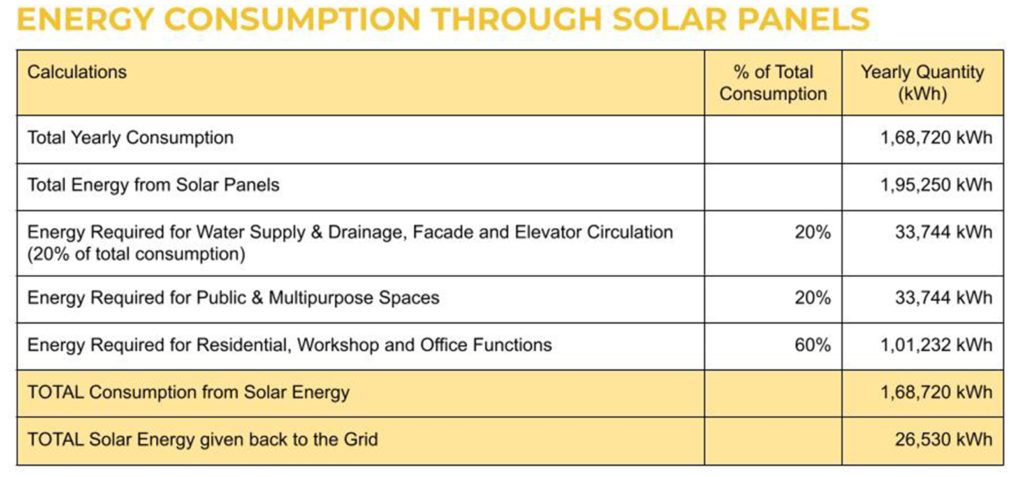
The PV Cells convert the sunlight into energy and send it to the Batteries in the building cores, this is then sent to the Energy Invertor which converts the current into an Ac Current. Of this half is then sent directly to the service functions to be utilized and the other half goes to the Energy storage. The energy storage sends the energy to the rest of the functions in the building and also send the surplus to the grid.
On days where there is not enough energy generated, the energy is drawn from the grid and utilized in the design. At the end of the month the Net Meter calculates the total energy drawn from the grid and offsets it with the amount sent to the grid to give the Net Positive or the Net Negative amount of the structure for that month.
